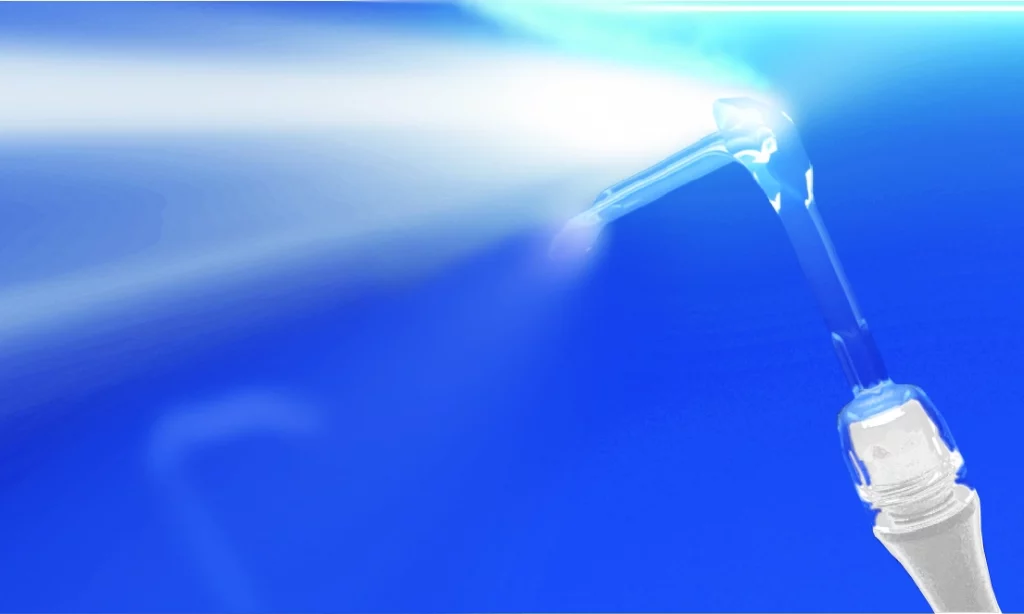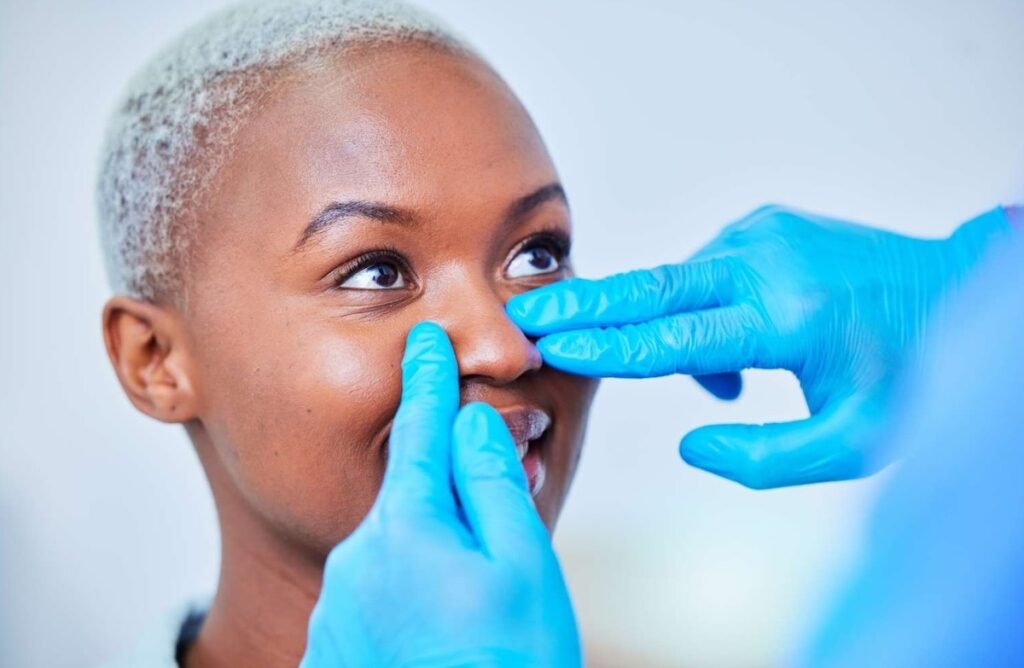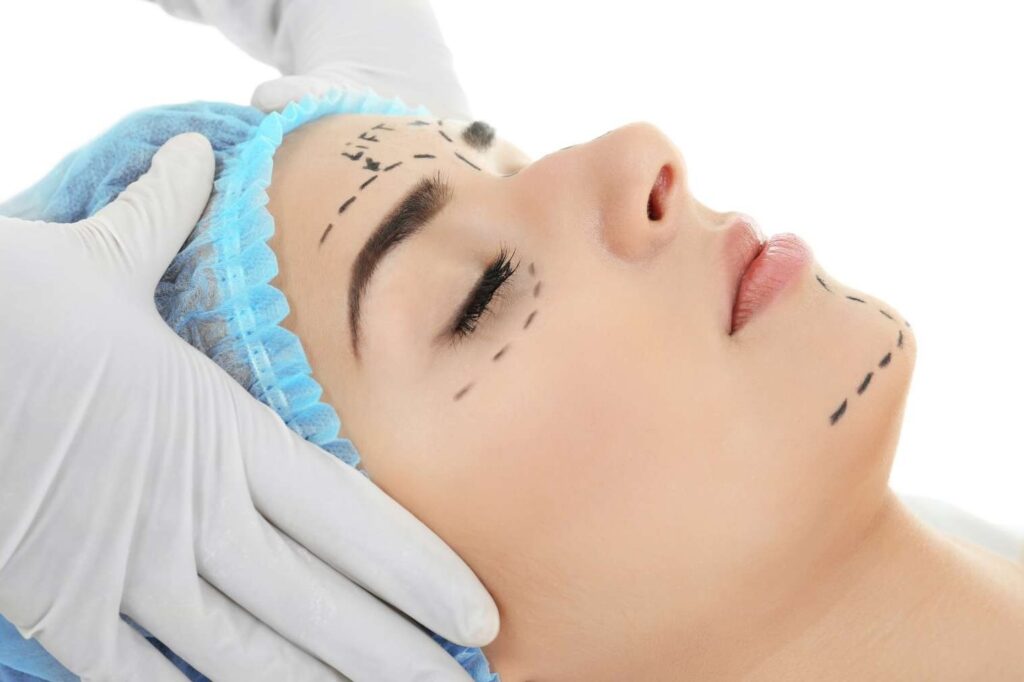Facial plastic surgery encompasses various procedures to improve or enhance facial features and structures, for aesthetic or reconstructive purposes. Within the scope of facial plastic surgery, procedures include common surgeries like rhinoplasties, facelifts and browlifts, and blepharoplasties. As well as more challenging procedures like microvascular and craniomaxillofacial reconstructions.
And in this industry estimated to top US$75 billion by 2030, using good devices can help clinicians work more efficiently and safely, and help patients achieve better outcomes. Here, we’ll examine some key devices and advances that are helping plastic surgeons and their patients. Two are available here at Yasui.
Facelift markers
A facelift, or rhytidectomy, is a surgical procedure to reduce the visible signs of aging in the face and neck. The plastic surgeon lifts, tightens, repositions, and removes excess facial skin, resulting in a more youthful and rejuvenated appearance.
The D’Assumpcao facelift marker is crafted specifically for planning traditional facelifts, mini facelifts, and brow lifts. Resembling a typical ringed, handheld tool, its distinctive features include a unique double-hooked grasping tip and an ink reservoir. This design lets surgeons precisely mark facial skin flaps earmarked for excision.
Integrating the double-hooked grasping tip and ink reservoir is valuable for facial surgeons, providing intraoperative anatomical guidance and meticulous tissue management essential for intricate facial work.
The marker enables smooth and uninterrupted marking throughout the procedure, eliminating the guesswork traditionally associated with determining the amount of skin to be excised. This precision eliminates constraints and contributes to a seamless and effective facelift process, helping to achieve good results.
Surgical and skin marking pens
Surgical and medical marking pens (or markers) are essential for plastic and cosmetic surgeons. They’re used for showing and explaining the areas of work to the patient and for the physician and staff’s reference during a procedure.
These sterile pens are often single-use, non-permanent, but long-lasting and durable ink directly applied to the patient’s skin preoperatively. In facial plastic surgery they’re used for:
- Preoperative marking of where incisions should be made, where tissues should be repositioned, or where implants may be inserted.
- Gain patient consent and satisfaction by letting them see the planned outlines.
- Marking reference points on the face to achieve accurate alignment and symmetry during procedures.
- Identify important anatomical structures, such as the location of nerves, blood vessels, and other vital landmarks.
- Provide a visual reference for the planned surgical steps, helping everyone get on the same page regarding the intended procedure.
- Minimize errors during surgery by following guidelines set by the markings to make accurate incisions or reposition tissues with a higher degree of precision.
Handheld retractors
Handheld retractors are essential tools, especially in more precise surgery. They offer surgeons precise tissue manipulation and optimal visibility during procedures. In facial plastic surgery, as the tissues manipulated are delicate, smaller tools and devices are necessary.
The Tebbetts self-retaining skin hook is another common retractor in plastic surgery. This device has a hool-like tip and an angled slot in its handle. During surgical procedures, its hook-like tip can grip and apply controlled tension to specific soft tissues like skin, vessels, organs, or ducts. The angled slot can accept elastic bands, which, when secured to drapes, keep the instrument firmly in position, transforming it into a self-retaining instrument.

The Yasui koplight is especially popular in facial surgeries thanks to its light weight and integrated LED lighting.
Read “What Retractors Are Used in Facial Plastic Surgery” for a deeper dive.
Facelift scissors
Facelifts rely on specialized scissors that facilitate the spread dissection of the tissues.
The Aston facelift serrated scissor is a good example. This instrument is distinguished by its curved working end and blunt tips, ideal for precise dissection. Primarily employed for cosmetic surgeries, this operating scissor facilitates the dissection of skin, fascia, and muscles. Its uniquely shaped blades minimize traction on adjacent tissues, safeguarding them against potential damage. At the same time, the double edge enables effective and precise tissue separation during dissection.
Malleable dissectors
Dissectors in facial plastic surgery are specialized instruments designed for the delicate separation and manipulation of tissues during surgical procedures. These tools aid in precise dissection, allowing for carefully separating layers, muscles, or other structures.
The Del Campo Dissector is a useful dissector frequently used in facial plastic surgeries, such as brow and forehead lifts. This device has an adaptable straight or curved shaft and sharp and blunt tips, with optional suction. Its unique design allows easy access to intricate anatomical regions during open and endoscopic facial and forehead procedures.
Morselizers
Morselizers are surgical instruments frequently used in facial plastic surgery. They’re designed to precisely cut, grind, or pulverize tissues into smaller, more manageable fragments. These devices are particularly useful when precise tissue size and texture control are essential.
They can be employed in various facial plastic surgeries, such as orthognathic surgery, where bone adjustments are necessary, or in reconstructive procedures where tissue reshaping or resizing is required for optimal aesthetic or functional outcomes.
The Gunter Morselizer is one such device. This instrument offers a diverse selection of curvatures, angles, and sizes, as well as blunt tips, which prevents soft tissue damage during its use. The Gunter Morselizer is most commonly used in septorhinoplasty for making parallel cuts in cartilage, letting surgeons fold cartilage as desired. However, in different configurations, this instrument’s shape and form can be used in various other facial surgeries as it’s highly adaptable to multiple anatomical nuances and surgical requirements.
Absorbable sutures
Absorbable sutures are medical threads used in surgeries. They naturally break down and are absorbed by the body over time, removing the need for, well, removal. Typically made from materials like polyglycolic or polylactic acid, these sutures eliminate the need for manual removal, as the body’s enzymes gradually metabolize them. Absorbable sutures are commonly used in various medical fields, including facial plastic surgery, to provide convenience, reduce scarring, and support the natural healing process.
Avoiding the need for suture removal is a key advantage of absorbable sutures in facial plastic surgery. Unlike non-absorbable sutures, which need a separate removal procedure, absorbable sutures eliminate the inconvenience and potential discomfort associated with suture removal. This is particularly advantageous in cosmetic procedures where patient comfort and convenience are paramount.

The gradual absorption of these sutures also aligns with the natural healing process of facial tissues. As the sutures break down, they allow the incision to heal without foreign material, reducing the risk of inflammation or adverse tissue reactions. This can be particularly important in facial areas where scarring is a significant concern, such as cosmetic rhinoplasty or facelift surgeries.
Using absorbable sutures can also improve cosmetic outcomes. The gradual absorption process minimizes the risk of suture marks or track lines that may be visible on the skin surface, improving the overall aesthetic result of the surgery. In delicate facial procedures where subtlety is critical, the absence of visible sutures supports a more natural and seamless appearance.
Tissue adhesives
Tissue adhesives, commonly known as tissue glue or fibrin sealant, are used in many surgical specialties including facial and reconstructive plastic surgery. These products have revolutionized wound closure with their array of benefits. In cosmetic surgery, where patients often pay out of pocket, this type of efficient, QOL-improving product is especially valued.
Tissue adhesives can be used as non-invasive alternatives to sutures or staples for wound closure, and for attachment of skin grafts, fixation of tissue flaps and subcutaneous implants, anastomosis of microvasculature, and even control of tissue adhesion. In facial plastic surgery, fibrin sealants, play a crucial role in securing skin in desired positions during facelift procedures and minimizing postoperative bleeding and bruising.
Tissue adhesives are also often quicker and easier to use than sutures for closing surgical wounds. They also carry no risk of injury from sharp objects, unlike needles that are used for sutures, and may help prevent infection.

